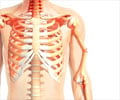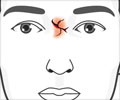According to an article published in this week’s BMJ, in an attempt to prevent elderly people from getting serious fractures, the risk of falling in often overlooked.
The Finnish authors says studies show that if the focus were to be switched to how at risk someone is of falling, rather than whether they have the bone disease osteoporosis, then considerably more fractures in elderly people could be prevented. However, many important publications completely overlook falling as a risk factor and it is still very poorly recognised and assessed by doctors.Dr Jarvinen and colleagues say current fracture prevention methods have serious limitations. At the moment an individual is screened to see whether they have osteoporosis, and is then treated accordingly with medication. Yet the test which determines whether someone has the disease is flawed. It assesses bone mineral density (BMD) and can often either over and under-estimate that density. BMD is therefore a poor predictor of whether a person is likely to suffer a fracture and is of little diagnostic value to a GP.
The cost of using drugs to prevent fractures in the elderly is also extremely high. For example the researchers calculated that 577 postmenopausal women would have to be treated with osteoporosis drugs (known as bisphosphonates) for one year to avert one hip fracture, at a cost of about £120,000. Among a high risk population (women over 80), for whom drug prevention would theoretically be most effective, prevention of one hip fracture costs about £28,500. Yet 80% of hip fractures would still occur.
The authors say falling is the major cause of nine in ten hip fractures and drug therapy would not prevent more fractures because the drugs cannot be expected to work on fall-related risk factors. Eight in ten fractures also occur in people who do not even have osteoporosis.
The authors go on to say it is important for GPs to identify at-risk individuals and assess their needs. Current evidence-based recommendations for preventing falls include regular strength and balance training, taking Vitamin D and Calcium supplements and an assessment of the possible hazards in the homes of at-risk people. There is evidence that fall prevention efforts can reduce the incidence of falls by up to 50% in the elderly.
Source-Eurekalert
LIN/S











